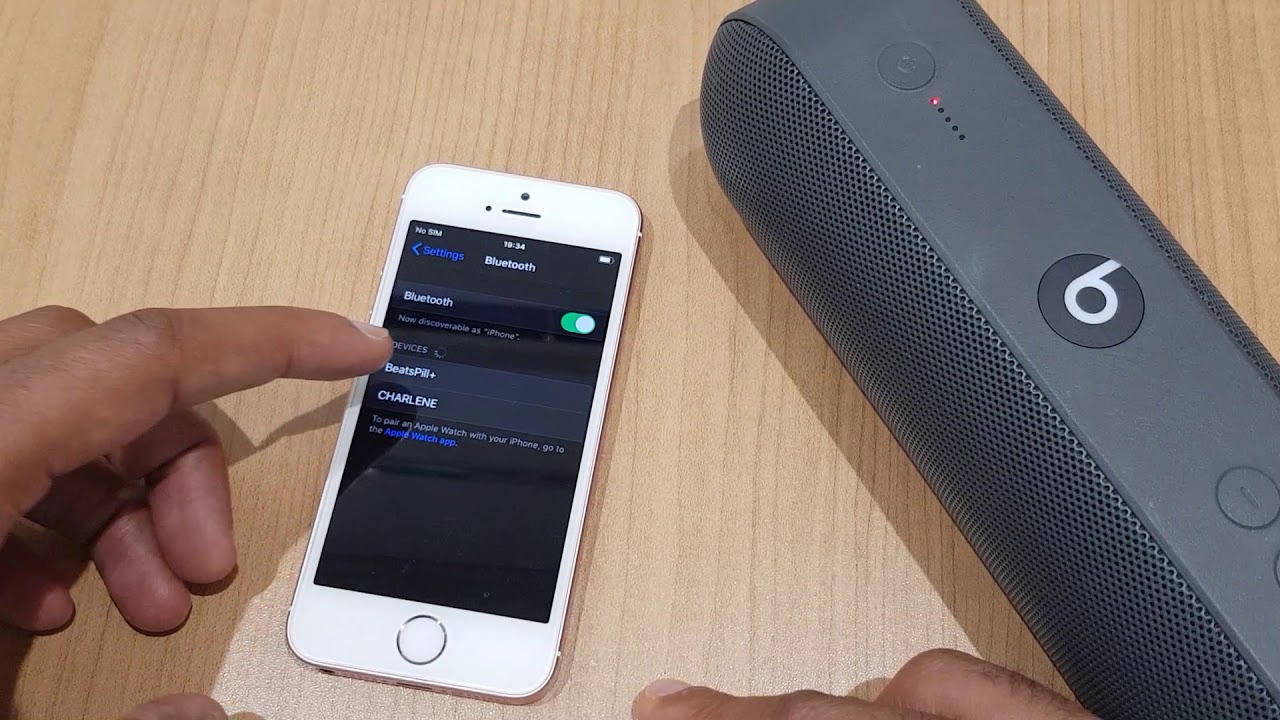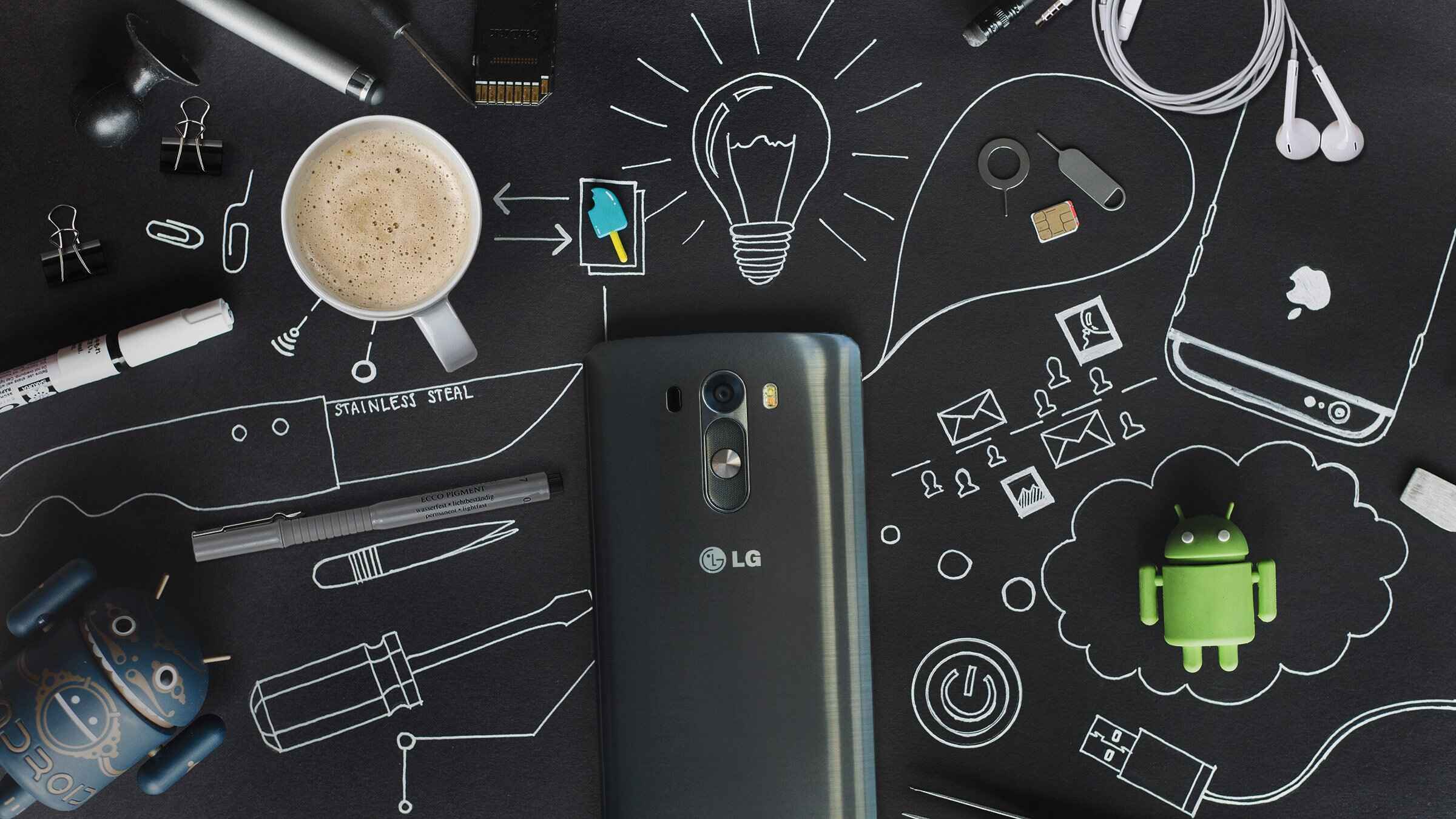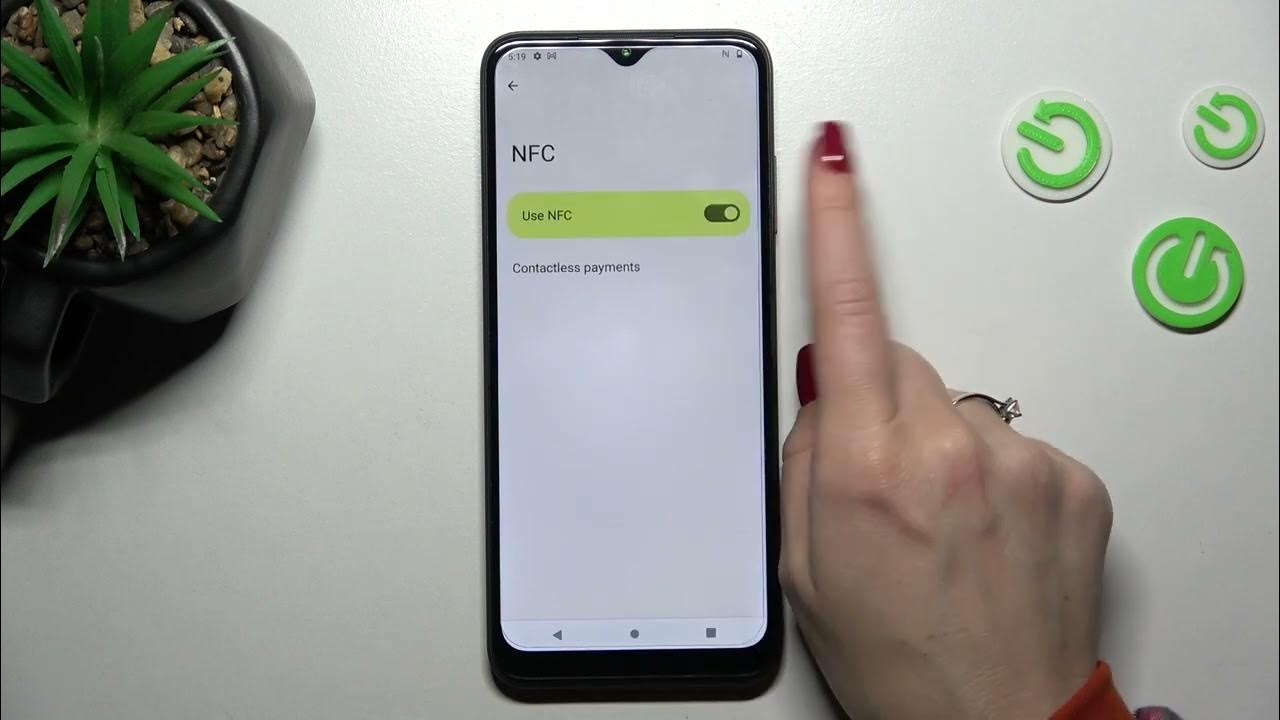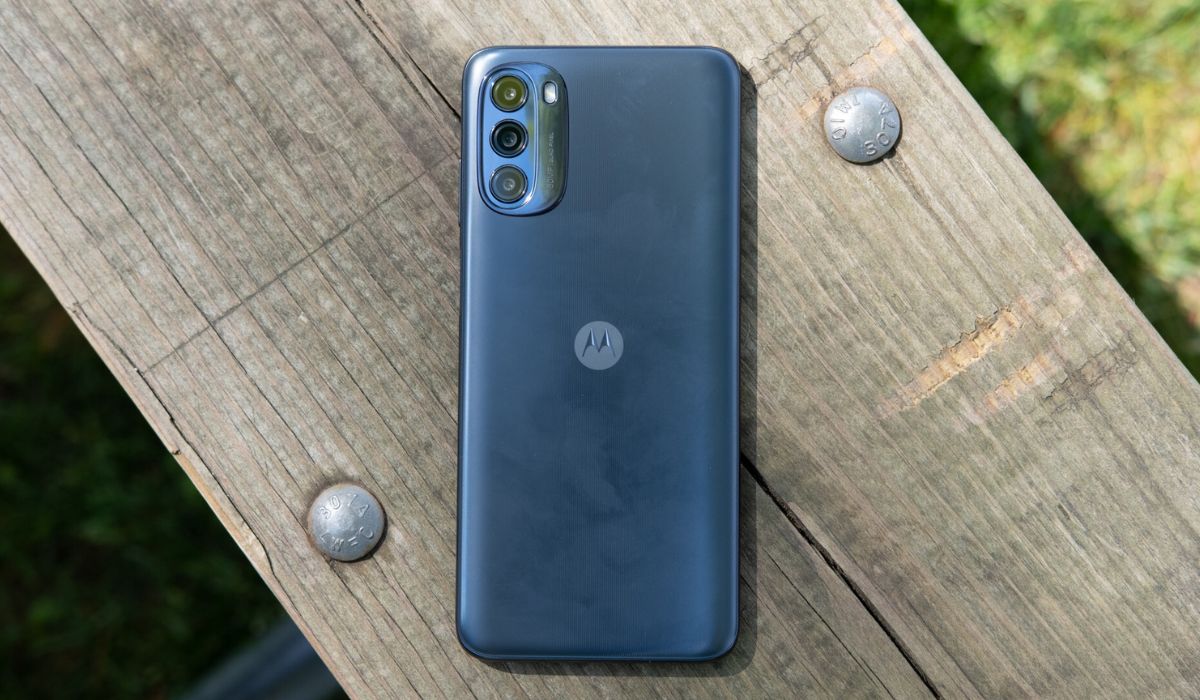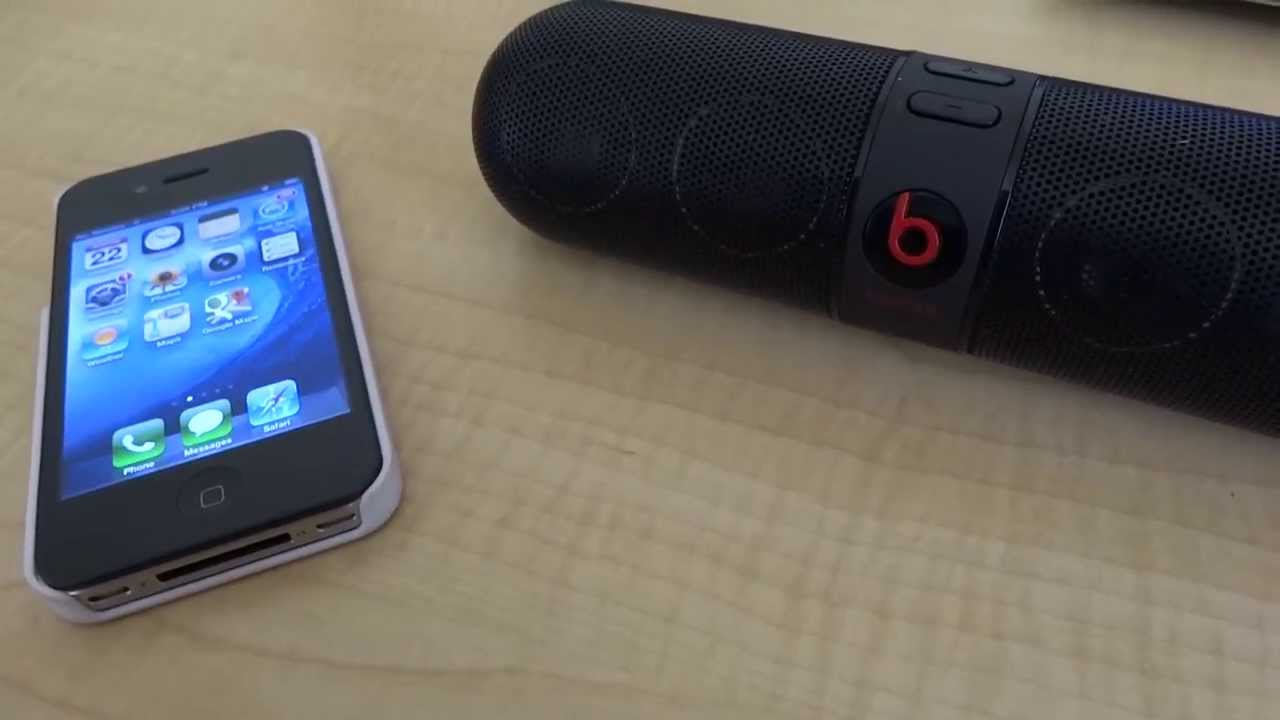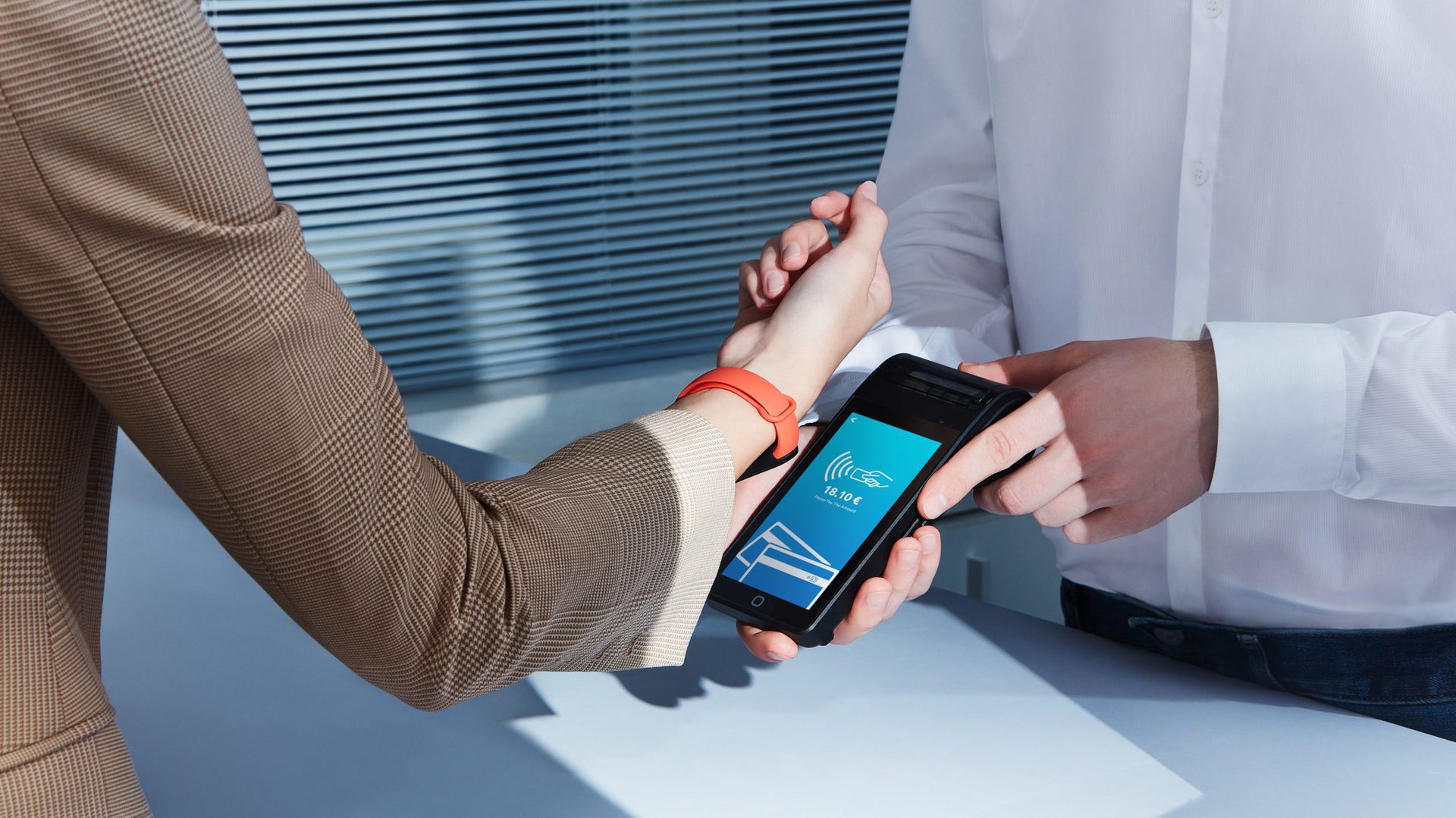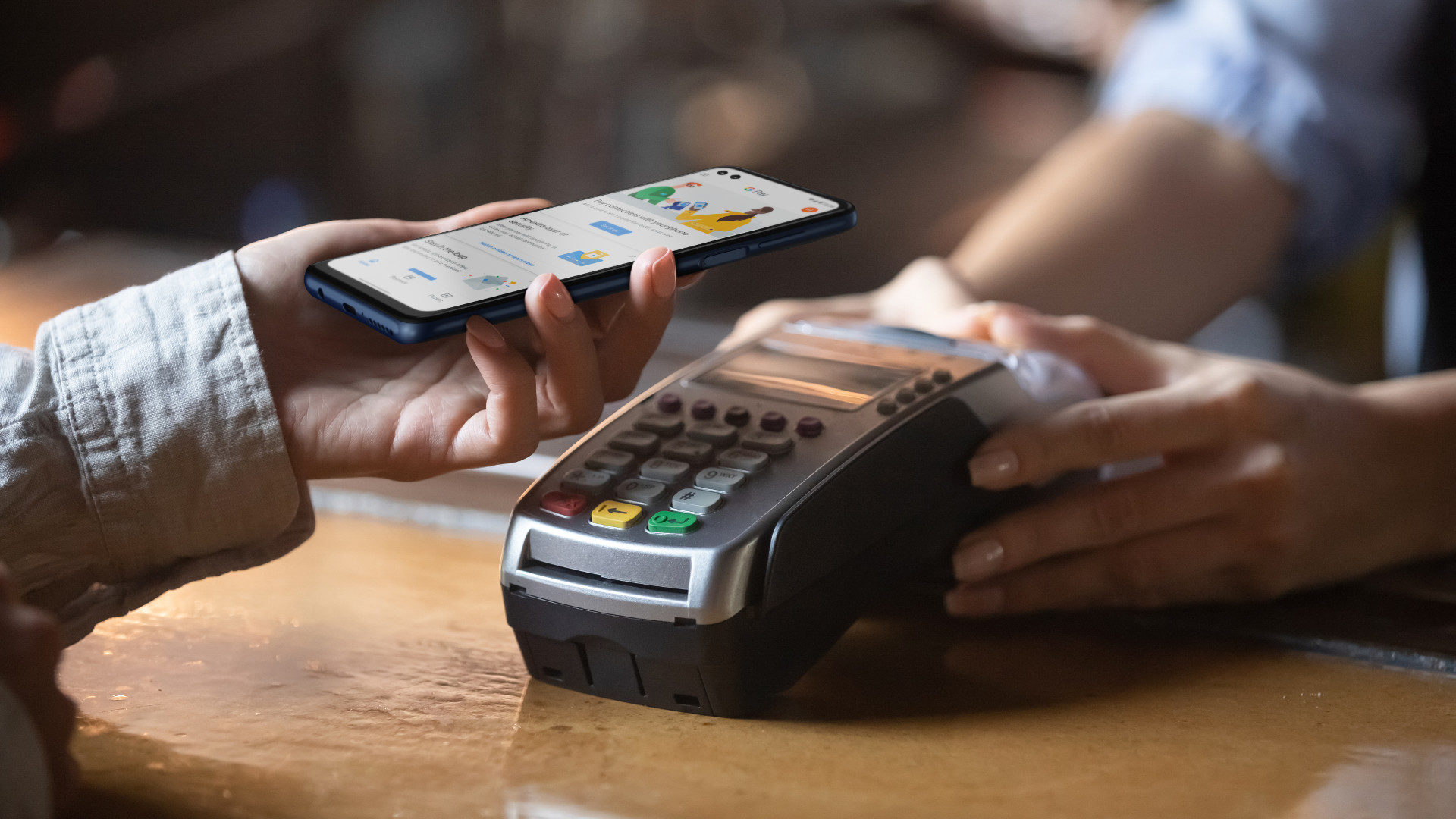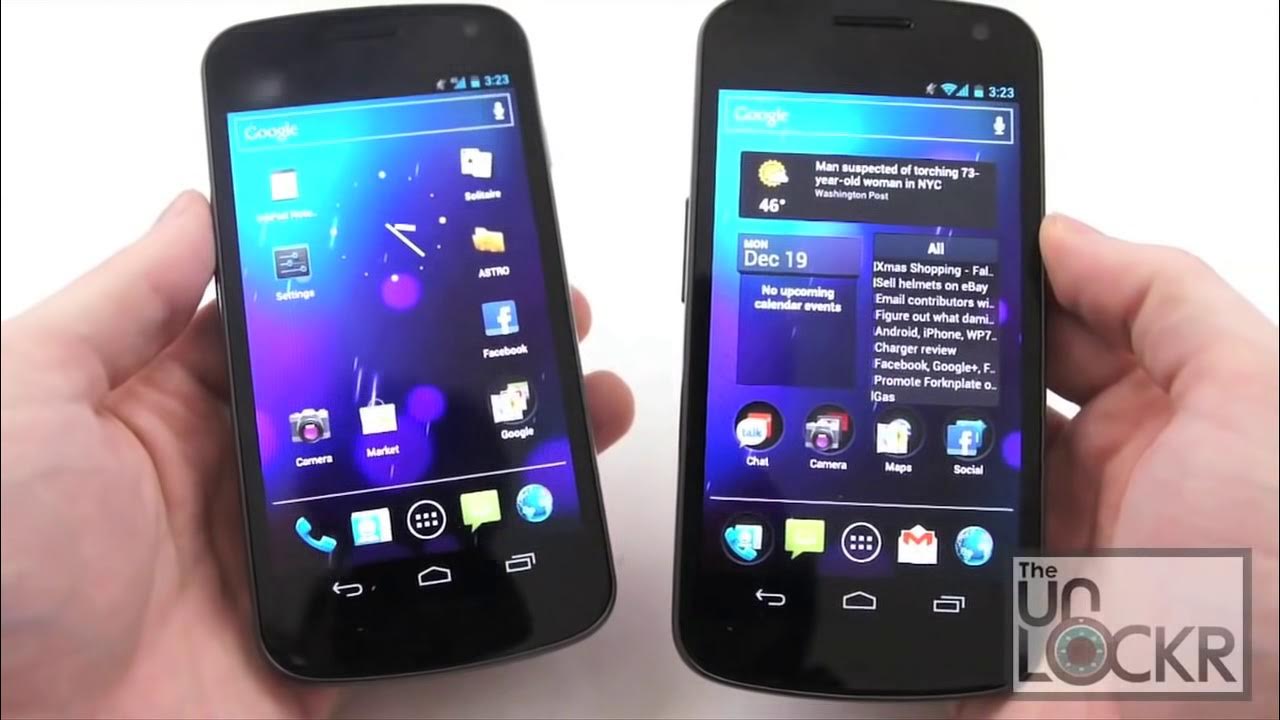Introduction
NFC (Near Field Communication) pairing is a wireless technology that allows devices to establish a connection by simply touching or placing them in close proximity to each other. This technology has gained significant popularity in recent years due to its ease of use and versatility. In this article, we will explore what NFC pairing is, how it works, and the benefits it offers.
NFC pairing utilizes short-range radio frequency communication to establish a secure connection between devices. This technology eliminates the need for complex configurations or the exchange of lengthy passcodes. With a simple tap or touch, devices can quickly and securely exchange data, perform transactions, or establish a connection for various purposes.
One of the primary functions of NFC pairing is contactless payment. It allows users to make payments by simply tapping their smartphones or other NFC-enabled devices on compatible payment terminals. This feature has revolutionized the way we make payments, offering convenience and security by replacing traditional physical payment methods.
In addition to contactless payment, NFC pairing enables seamless sharing of information between devices. For example, you can share contact details, photos, documents, or even website links with a simple tap. This makes it incredibly convenient for users to exchange data without the need for manual input or file transfers.
Moreover, NFC pairing facilitates seamless pairing of devices for various purposes. For instance, it can be used to connect smartphones with wireless headphones, speakers, or smart home devices. This eliminates the need for complicated setup processes and allows for a hassle-free and instant connection.
NFC pairing is supported by a wide range of devices, including smartphones, tablets, smartwatches, and even some laptops. The technology is becoming increasingly common, thanks to its ability to simplify various tasks and enhance user experiences.
In the following sections, we will delve deeper into how NFC pairing works, the benefits it offers, the devices that support it, and how to set it up on different platforms. We will also address some common issues with NFC pairing and provide tips to resolve them. So, let’s dive in and explore the world of NFC pairing!
How Does NFC Pairing Work?
NFC pairing works through the use of electromagnetic fields to transfer data between devices. It requires two devices with NFC capabilities: one device acts as the “initiator” or “active” device, and the other as the “target” or “passive” device.
When the initiator device is brought close to the target device (usually within a few centimeters), a connection is established. This connection is made possible by the presence of NFC chips or antennas embedded in the devices.
NFC pairing operates in two modes: read/write mode and card emulation mode. In read/write mode, the initiator device reads data from the target device or writes data to it. For example, when sharing a photo from one NFC-enabled smartphone to another, the initiator device (the sending device) reads the photo data and transfers it to the target device (the receiving device).
In card emulation mode, the initiator device mimics a contactless smart card, allowing it to interact with card readers and payment terminals. This mode is commonly used for contactless payments, where the initiator device acts as the payment card, allowing payment information to be transmitted securely to the payment terminal.
NFC pairing uses a combination of radio frequency identification (RFID) and peer-to-peer communication protocols. It operates in the 13.56 MHz frequency range, utilizing inductive coupling to establish a communication link. This frequency range allows for short-range communication, ensuring that the connection is secure and limited to the immediate vicinity of the devices.
When the devices are in proximity, the NFC antennas or chips generate a radio frequency field. This field powers the passive device and enables it to send data back to the active device. The data transfer occurs through modulation and demodulation of the radio frequency field, allowing for the exchange of information between the devices.
It’s important to note that NFC pairing requires both devices to be in close physical proximity for the connection to be established. This close proximity adds an extra layer of security, as it prevents unauthorized access or data interception over the air.
In summary, NFC pairing works by utilizing electromagnetic fields and NFC technology to establish a secure connection between devices. It operates in either read/write mode or card emulation mode, allowing for the transfer of data or contactless payment transactions. By harnessing the power of radio frequency fields and peer-to-peer communication protocols, NFC pairing simplifies and enhances a wide range of interactions between devices.
Benefits of NFC Pairing
NFC pairing offers a range of benefits that make it a popular choice for wireless communication and data exchange. Let’s explore some of these advantages:
1. Convenience: One of the primary benefits of NFC pairing is its convenience. With a simple tap or touch, devices can instantly connect and exchange data. This eliminates the need for manual setup or complex configurations, making it extremely user-friendly.
2. Speed and Efficiency: NFC pairing enables quick and efficient data transfer between devices. Whether it’s sharing files, contact details, or making contactless payments, NFC ensures a fast and seamless experience. This is particularly beneficial when time is of the essence.
3. Security: NFC pairing incorporates various security measures to protect sensitive data. It uses encryption and authentication protocols to ensure that information is transmitted securely between devices. Additionally, the close proximity required for NFC pairing adds an extra layer of security, reducing the risk of unauthorized access or data interception.
4. Versatility: NFC pairing offers versatility in its applications. Besides contactless payments, NFC is used for tasks like ticketing, access control, and transportation services. It can also be employed to connect and control smart devices in the Internet of Things (IoT) ecosystem, enhancing the functionality and interconnectedness of everyday objects.
5. Interoperability: NFC pairing works seamlessly across different devices and platforms. It is widely supported by various manufacturers, ensuring compatibility between NFC-enabled devices. This means that users can connect and communicate effortlessly, regardless of the brand or operating system they are using.
6. Energy Efficiency: NFC pairing consumes minimal power, allowing devices to establish connections without significant battery drain. This makes it ideal for wireless applications where battery life is crucial, such as mobile payments or connecting wearable devices.
7. Cost-effectiveness: NFC technology is relatively inexpensive compared to other wireless communication technologies. This makes it an affordable option for integrating NFC capabilities into a wide range of devices, increasing accessibility and adoption.
8. User-Friendly: NFC pairing is designed to be user-friendly, with a simple and intuitive interface. The technology provides clear feedback to users, such as visual or audible cues when a successful connection is made. This enhances the overall user experience and makes NFC pairing accessible to a wide range of users, regardless of their technical knowledge.
With its convenience, speed, security, and versatility, NFC pairing offers numerous benefits for various applications. Whether it’s making contactless payments, sharing data, or connecting devices, NFC provides a seamless and efficient wireless communication solution.
Devices That Support NFC Pairing
NFC pairing is supported by a wide range of devices, including smartphones, tablets, smartwatches, and even some laptops. The technology is becoming increasingly common, thanks to its ability to simplify various tasks and enhance user experiences. Here are some examples of devices that support NFC pairing:
1. Smartphones: Most modern smartphones are equipped with NFC capabilities. Popular smartphone brands such as Apple, Samsung, Google, and Huawei offer NFC-enabled devices, allowing users to take advantage of NFC pairing for various purposes.
2. Tablets: Many tablets, including the Apple iPad and Android-based tablets, come with NFC capabilities. This allows users to easily share files, connect accessories, or make contactless payments using their tablets.
3. Smartwatches and Fitness Trackers: NFC pairing is increasingly integrated into smartwatches and fitness trackers. These devices can be used for contactless payment, access control, or even to unlock doors with supported NFC systems.
4. Laptops and Computers: While not as common as in smartphones, some laptops and computers are equipped with NFC technology. This enables seamless connectivity with other NFC-enabled devices or contactless card emulations for secure transactions.
5. Wearables and IoT Devices: NFC pairing is also prevalent in wearable devices such as smart bracelets, smart rings, and smart glasses. These devices can connect to smartphones or other NFC-enabled devices to exchange data or perform specific tasks.
6. Speakers and Audio Devices: NFC pairing can be found in wireless speakers and audio devices. By simply tapping your smartphone on the NFC-enabled speaker, you can quickly and effortlessly connect and stream audio content.
7. Access Control Systems: NFC technology is widely integrated into access control systems for buildings, hotels, and transportation systems. NFC-enabled cards or smartphones can be used to gain access to secure areas or to board public transportation.
8. Payment Terminals and Point of Sale (POS) Systems: Many payment terminals and POS systems support NFC payment methods. This allows users to make contactless payments by tapping their NFC-enabled devices on the payment terminal.
As NFC technology continues to advance and gain popularity, more devices are expected to integrate NFC capabilities. This will further expand the applications and possibilities of NFC pairing, making it a ubiquitous feature in our interconnected world.
Setting Up NFC Pairing on Android Devices
Setting up NFC pairing on Android devices is a straightforward process. Here’s how you can enable and configure NFC on your Android device:
1. Enable NFC:
Go to your device’s settings and look for the “Connections” or “Network & internet” section. Within this section, you should find an option to enable or toggle NFC. Tap on it to enable NFC functionality on your Android device.
2. Adjust NFC Settings:
After enabling NFC, you can access additional NFC settings to customize your experience. These settings may vary depending on your Android device, but common options include:
- Android Beam: This feature allows you to share files, photos, videos, and other content with another NFC-enabled Android device. Make sure Android Beam is enabled if you want to take advantage of it.
- Tap and Pay/Wallet/Apps: This setting controls your NFC-enabled payment services and apps. You can manage your payment methods, add loyalty cards, or choose the default payment app for contactless payments.
- Android Beam Preferred File Types: You can specify which types of files you want to allow for sharing via Android Beam. This ensures that only the selected file types are sent when using the feature.
- Device Visibility: This option determines if your device is discoverable by other NFC devices. You can choose to make your device visible only when the screen is unlocked or keep it visible at all times.
3. Connect with NFC Devices:
Now that NFC is enabled on your Android device, you can start pairing with other NFC-enabled devices. Whether it’s sharing files, making payments, or connecting to Bluetooth devices, the process is straightforward:
- To share files: Open the file you want to share, bring your Android device close to the target device, and tap the back of your device against the back of the target device. Follow the on-screen instructions to complete the transfer.
- To make payments: Ensure that your payment app is set up and capable of NFC payments. When at a compatible payment terminal, unlock your device and tap it against the terminal. Follow any prompts or authentication steps required.
- To connect to Bluetooth devices: Ensure that the Bluetooth device is in pairing mode. Open the Bluetooth settings on your Android device and tap on the device you want to pair with. If prompted, confirm the pairing request on both devices.
Each NFC pairing scenario may have specific instructions or additional steps depending on the devices you are using. However, the overall process remains largely the same: enable NFC, adjust NFC settings as desired, and follow the specific instructions for the task at hand.
By following these steps, you can easily set up and utilize NFC pairing on your Android device, allowing for seamless communication, file sharing, payment transactions, and more.
Setting Up NFC Pairing on iOS Devices
Setting up NFC pairing on iOS devices, such as iPhones and iPads, is a relatively simple process. While iOS devices have limited NFC capabilities compared to Android devices, you can still make use of NFC features available on your device. Here’s how to set up NFC pairing on iOS:
1. Enable NFC:
By default, NFC is enabled on iOS devices, so there is no specific setting to enable or disable it. However, you need to make sure that your device’s NFC functionality is turned on, as it may be disabled if the device is in low power mode.
2. Use NFC for Specific Tasks:
On iOS devices, NFC functionality is primarily utilized for Apple Pay, which allows you to make contactless payments. Here’s how to set up and use Apple Pay with NFC on your iOS device:
- Add Cards to Wallet: Open the Wallet app on your iPhone or iPad and tap the “+” icon to add your credit or debit cards. Follow the instructions to verify and activate your cards.
- Enable Apple Pay: Go to your device’s settings, tap on “Wallet & Apple Pay,” and make sure Apple Pay is enabled. You may need to provide your Apple ID credentials to activate it.
- Make Contactless Payments: When you’re at a payment terminal that supports NFC payments, double-click the Home button (or side button on newer iPhones without a Home button) to activate Apple Pay. Authenticate with Face ID, Touch ID, or your passcode, and bring your device close to the payment terminal to complete the transaction.
It’s worth mentioning that iOS devices have limited support for NFC pairing with other devices, such as file sharing or device connectivity. Apple restricts NFC usage to primarily focus on Apple Pay and specific authorized applications.
However, iOS devices do support various NFC tags and scanning capabilities. For example, you can use your iPhone or iPad to scan NFC tags that contain information such as website URLs, Wi-Fi network configurations, or contact details. These tags can trigger specific actions or provide additional information when scanned by your device.
In summary, setting up NFC pairing on iOS devices primarily revolves around enabling and utilizing Apple Pay for contactless payments. While the NFC capabilities on iOS devices are limited compared to Android devices, NFC tag scanning features offer additional functionality for interacting with NFC-enabled objects and tags.
By following the steps outlined above, you can easily enable and make use of NFC pairing and NFC tag scanning features on your iOS device, enhancing your mobile payment experience and expanding your interaction with NFC-enabled objects.
Common Issues with NFC Pairing
While NFC pairing is a convenient and reliable technology, it can sometimes encounter a few common issues. Understanding these issues can help you troubleshoot and resolve any problems you may encounter. Here are some common issues with NFC pairing:
1. Interference: Nearby electronic devices or metal objects can interfere with the NFC signal, causing connectivity issues. Keep your NFC-enabled devices away from other electronic devices, credit cards, or any metal objects that may disrupt the signal.
2. Incompatibility: NFC pairing requires both devices to have NFC capabilities. If one device does not support NFC or has a faulty NFC component, pairing may not be possible. Make sure that the devices you are trying to pair both support NFC technology.
3. Disabled NFC or Settings: NFC may be disabled or not properly configured on your device. Check your device’s settings to ensure that NFC is enabled and properly adjusted. Also, be sure to configure the NFC settings for specific tasks, such as enabling Android Beam or setting your default payment app.
4. Insufficient Distance or Angle: NFC pairing requires close proximity between devices. If the devices are not properly aligned or are too far apart, the connection may fail. Ensure that the NFC antennas of both devices are touching or close to each other for successful pairing.
5. Low Battery: Low battery levels can affect the performance of NFC pairing. Ensure that both devices have sufficient battery power to establish and maintain the NFC connection. If one device has a low battery, consider charging it before attempting NFC pairing.
6. Damaged NFC Components: Physical damage to the NFC components, such as a scratched or dirty NFC antenna, can prevent proper communication. Clean the NFC antenna and inspect it for any visible damage. If necessary, consult an authorized service center for repair or replacement.
7. Software or Firmware Issues: Outdated software or firmware on your device could potentially cause problems with NFC pairing. Make sure that both devices have the latest software updates installed to ensure compatibility and optimize performance.
8. Security Settings: Some devices may have specific security settings that restrict NFC functionality. Check your device’s security settings to ensure that NFC pairing is not blocked by any security features or restrictions.
If you encounter issues with NFC pairing, try troubleshooting by ensuring correct proximity, enabling NFC on both devices, adjusting settings, and checking for any physical or software-related problems. If problems persist, consult the manufacturer’s support documentation or contact customer support for further assistance.
By being aware of these common issues and following the recommended troubleshooting steps, you can effectively address any problems and enjoy seamless NFC pairing experiences with your devices.
Conclusion
NFC pairing is a versatile and convenient wireless technology that simplifies various tasks, from contactless payments to file sharing and device connectivity. By enabling NFC on compatible devices, users can tap or touch their devices together to establish secure connections and exchange data seamlessly.
In this article, we explored what NFC pairing is and how it works. We discussed the benefits it offers, including convenience, speed, security, and interoperability. NFC pairing allows for quick and efficient data transfer, enhances user experiences, and offers a wide range of applications and functionalities.
We also examined the devices that support NFC pairing, including smartphones, tablets, smartwatches, and IoT devices. NFC technology is becoming increasingly common, with most major brands incorporating it into their devices. This ensures compatibility and ease of use across platforms and devices.
Furthermore, we provided step-by-step instructions on how to set up NFC pairing on both Android and iOS devices. While Android devices offer broader NFC functionality, such as file sharing and device connectivity, iOS devices primarily focus on NFC-enabled payments through Apple Pay. However, NFC tag scanning features on iOS devices provide additional functionality for interacting with NFC-enabled objects and tags.
We also highlighted common issues that users might encounter with NFC pairing, including interference, incompatibility, disabled NFC settings, and damaged NFC components. By being aware of these issues and following troubleshooting steps, users can resolve common problems and ensure a seamless NFC pairing experience.
In conclusion, NFC pairing continues to enhance the way we connect, share, and interact with devices. With its simplicity, speed, and security, NFC technology is transforming the way we make payments, exchange information, and connect to various devices. As NFC continues to be integrated into more devices and applications, its potential for creating seamless and convenient experiences will only continue to grow.









